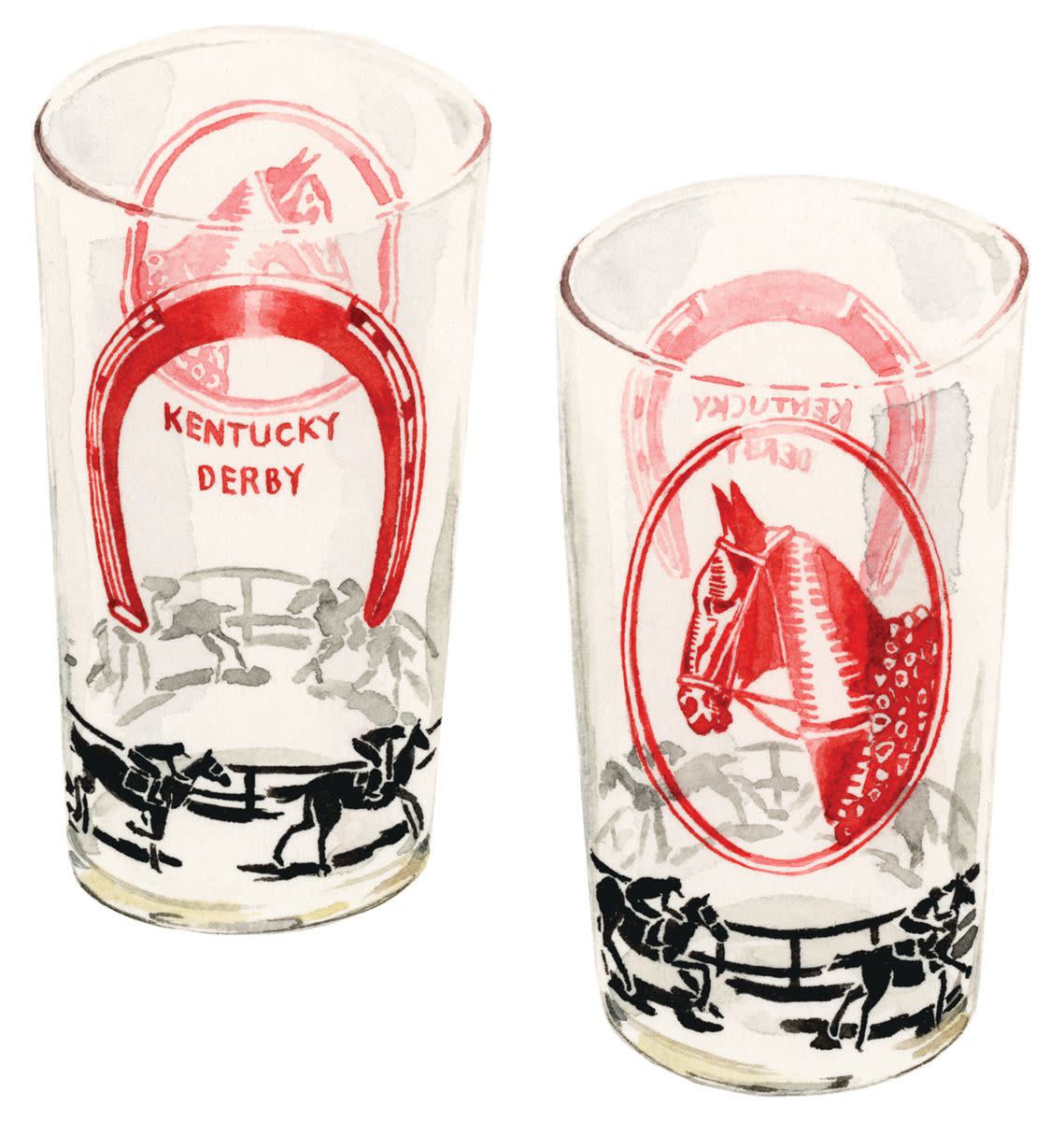“Hearst Magazines and Yahoo may earn commission or revenue on some items through these links.”
Peruse the packed-in booths at your average antiques mall—in the southeastern U.S., at least—and you’re likely to stumble across at least one vendor who has a couple of collectible Kentucky Derby glasses tucked away on their shelves. (They’re usually nestled near the kitschy coffee mugs and Libbey juice glasses.) Most specimens will usually cost you between $8 to $20 apiece, but if the odds are on your side, you may just stumble upon a souvenir glass worth between $5,000 and $40,000.
So how did these glasses become so prized? So glad you asked. Although the first official Kentucky Derby took place in 1875—last year marked the event’s 150th anniversary—the iconic Derby glassware didn’t debut until 1938, when the event organizers had decorative glasses made for the famous Churchill Downs dining hall. The vessels proved so popular that the track’s management noticed that people were pocketing them as souvenirs. (Blame it on the bourbon?) In 1939, they started producing glasses for profit, and haven’t skipped a season since.
While these commemorative 12-ounce cups are typically of a similar breed—they usually feature horses and jockeys, as well as the name of every Derby winner since Aristides in 1875—there are a few variations through the years that set certain sippers apart. For example, the 1939 glass (see below) is highly coveted given the fact that it’s the first official “collectible” glass. Rumor has it that only 800 of the 1940 red-and-blue Derby glass were made, which is why it has commanded sums as high as $40,000. From 1942 to 1944, glass was a rationed resource, so the Derby commissioned speckled Beetleware glasses, which can now fetch up to $5,000. The first printing of the 1956 glassware featured (whoops!) a headless jockey, and collectors always love a good factory error.
For the most part, glasses introduced after 1974 aren’t as high value because that’s when the venue started allowing other retail outlets to sell the collectible, which meant larger-scale production. (In other words, they’re much easier to track down.) That doesn’t mean we don’t love collecting them. (The glasses from 1974, 1977, 1981, 1982, and 1987 are a few of our aesthetic favorites.)

Still, production mistakes (and human error) continue to contribute to post-1974 collectability. For example, according to The Kentucky Derby Museum, the first run of the official 2003 glass incorrectly noted 1932 Derby winner Burgoo King as a Triple Crown winner instead of War Admiral, who completed the sweep in 1937. The 2020 glass is of interest because it reflects the race’s original May date, even though the Derby didn’t happen until that September. (Despite the pandemic-related delay, they didn’t make new glassware.)

If you’re tempted to pony up for your own collection, you may want to start with the Derby Glass Warehouse. Founded by Louisville residents Michael and Amy Seiler, the family-run company estimates it has bought and sold more than 150,000 Derby glasses through the years. The couple even helped Churchill Downs CEO, William “Bill” Carstanjen, complete his personal collection.
Regardless of where or how you source them, given the growing interest around antiques—not to mention bourbon—Derby glassware may be the safest bet you can make.

You Might Also Like
-
70 Impressive Tiny Houses That Maximize Function and Style
-
30+ Paint Colors That Will Instantly Transform Your Kitchen






